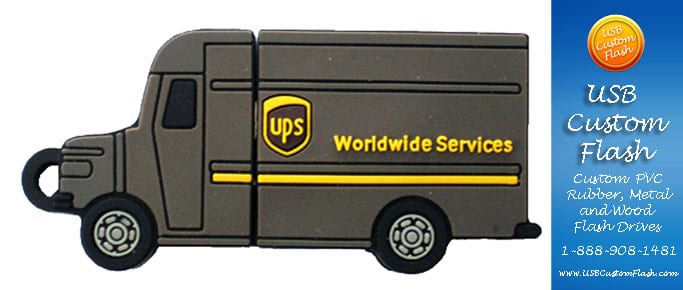Custom Flash Drive USB Designs, Custom Power Bank Portable Battery Chargers
UPS USB Flashdrive
Small companies often use both promotional campaigns and advertising when marketing their products. However, there are inherent differences between the two types of marketing methods. Promotional campaigns are better known as sales promotions. Business owners use them to provide consumers or business customers with discounts or incentives to purchase products or services. Advertising is generally more focused on the reasons people should make a purchase. There are other major differences between promotional campaigns and advertising.
<ul>
<strong>Duration</strong></ul>
Information on sales promotions may be embedded in advertising messages. However, sales promotions are generally run for shorter time periods than advertising. The reason is that sales promotions are usually more product- or service-focused. For example, a small restaurant company may promote specials on one menu item for six or eight weeks, and then start promoting another one. Small companies continue running their advertising throughout the year, but periodically change their promotional campaigns to push other products or services. Advertising is also limited to one-way communication, while the customer generally interacts with sales reps or other retail employees during promotional campaigns.
<ul>
<strong>Types</strong></ul>
Advertising is more media-focused and widespread. Small companies run many types of advertising messages, including ads for television, radio, the Internet, Yellow Pages, magazines, direct mail and billboards. Business owners also advertise through social media sites such as Facebook and Twitter.
Promotional campaigns include coupons, price reductions, buy-one-get-one-free promotions, contests, loyalty programs and point-of-purchase displays. Loyalty programs are designed to reward customers according to the volume of their purchases. Airlines have been using loyalty programs for years to reward frequent fliers. Point-of-purchase displays may include kiosks with detailed information, samples and video instructions on certain products. Prospective customers can see how the product operates at these display units.
<strong>Related Reading</strong>: <a href=”http://smallbusiness.chron.com/long-advertising-campaign-work-70221.html”>How Long Will It Take for an Advertising Campaign to Work?</a>
<strong>Objectives</strong><ul>
Small companies primarily use advertising to build awareness and the image of their brand or company name. It takes a considerable amount of time for companies to apprise consumers and businesses of their products and services. Business owners advertise to attract both customers and nonbuying consumers in the marketplace.
By contrast, the objective of a sales promotion is to induce consumers to try or purchase products. Many promotions are focused on the existing customer, especially those run at the retail level. Trial offers may include free food samples in grocery stores. Small companies’ promotional campaigns are often more geared toward an immediate sale, while they use general advertising to build their reputations.
<ul>
<strong>Considerations</strong></ul>
Advertising is usually more expensive than promotional campaigns. Small companies must purchase advertising in specific time frames or by space in print media. Their messages may transcend the target consumers they are trying to reach.
On the other hand, small companies can better control the cost of promotional campaigns. They may, for example, run coupons or incentive programs for specific stores. Samples may be limited to certain quantities to better keep costs in line with certain budget parameters. Moreover, promotional campaigns are usually more practical for higher-priced items like plasma televisions, copiers and industrial equipment. More information is required for these expensive products, making advertising cost-prohibitive and impractical.
John “ Hopelessly Happy” Graham
1-250-661-4057 Toll-Free 24/7/365
Head Office: Chandler Arizona.

